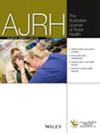Child Development Allied Health Services in Rural and Remote Areas: A Systematic Scoping Review of Drivers, Barriers and Enabling Strategies to Delivery of Services
Abstract
Background
Access to child development allied health services is challenging in rural and remote areas. A companion review has described the types of models of care that are used to deliver these services and their impact on the quality of healthcare.
Objective
This review aimed to identify service drivers for, and barriers and enabling strategies to the delivery of these services.
Design
A scoping review was conducted in alignment with the Joanna Briggs Institute methodology and PRISMA methodology. Data from included citations were thematically organised to describe and connect drivers, enabling strategies and barriers.
Findings
Twenty-five citations met the inclusion criteria. Six key drivers were identified, four key enabling strategies and five key barriers.
Discussion
Most models of care were driven by the need to address the inadequacy of child development allied health services. Place-based strategies were described by most citations as key to enabling the delivery of new models of care. However, understanding the community's capacity for a new model of care was a prominent barrier to implementation.
Conclusion
Findings from this review highlight the complexities of devising and delivering new models of care for children in rural and remote areas with developmental needs. While place-based approaches were the most widely adopted enabling strategy, these strategies presented their own challenges. Understanding community needs, capacity and assets from end-user (including children) perspectives is complex but should underpin designing and implementing models of care.


 求助内容:
求助内容: 应助结果提醒方式:
应助结果提醒方式:


